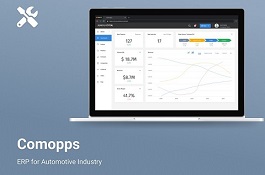IDAP is a Ukrainian full-service software development company. We build native applications for iOS, Android, and WEB from square one. IDAP began guiding companies into mobile in 2012 and has completed 200+ projects even since.
We work with startups, established businesses and well-known brands nearly in all spheres including retail sales, finances, healthcare, entertainment, traveling, and transportation services. We strive to build partnerships using our expertise and understanding of technology. Our goal is to help businesses keep up, or even run ahead of the tech curve.
Our team consists of over 100 full-time tech professionals who enjoy making impossible ideas come alive. We write bulletproof code that is diligently reviewed and tested before the final release. Our top tech stack includes Objective-C, Swift, Java, Javascript, Kotlin, Php, and more.
IDAP is a place where ideas bloom into real valuable products. When working with clients, we try to deliver information in the most accessible and understandable way. We are not code-only tech geeks. We are about craving the knowledge and sharing it.
Focus Areas
Service Focus
- Mobile App Development
- Web Development
- Software Development
Client Focus
- Medium Business
- Small Business
- Large Business
Industry Focus
- Art, Entertainment & Music
- Business Services
- Healthcare & Medical
IDAP LLC Executive Interview

- Fixed price/scope paid in 2-5 milestones depending on the project size. Usually, it looks like 40/40/20 where the upfront payment of 40% is charged before the start, 40% after the beta version/demo completion, and 20% after the production deployment.
- The Time & Materials payment structure always follows an agile approach. All cooperation is sprint-based, the same as invoicing. Where one sprint could be a period of 2-4 weeks, invoices consist of the number of hours spent during a certain sprint.
- A dedicated team is charged based on monthly flat invoices.
IDAP LLC Clients & Portfolios

IDAP LLC Reviews
- All Services
- Mobile App Development
- Relevance
- Most Recent
- Rating: high to low
- Rating: low to high

Reliable, competent, good value for money
Review Summary
What service was provided as part of the project?
Mobile App Development, Web Development
What is it about the company that you appreciate the most?
Competence, support, price

Professional and capable team
Review Summary
Over time we developed a strong relationship we IDAP. They are good people who run their company in a very professional way. The quality of their work is top-notch, and they can provide everything from designers to QA in-house when needed.
What service was provided as part of the project?
Mobile App Development, Web Development

